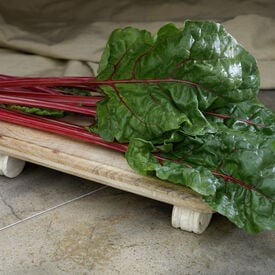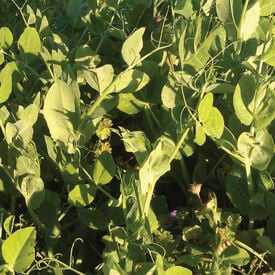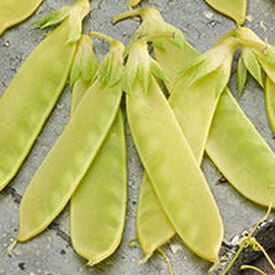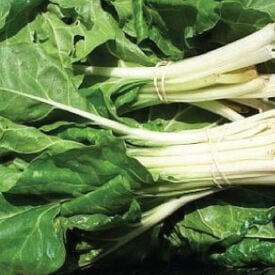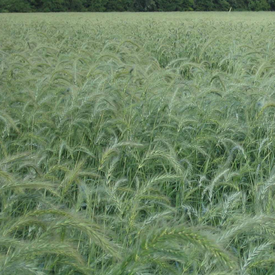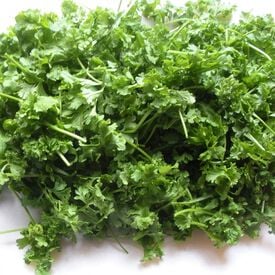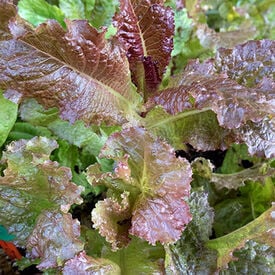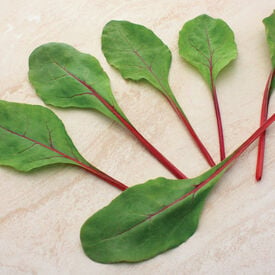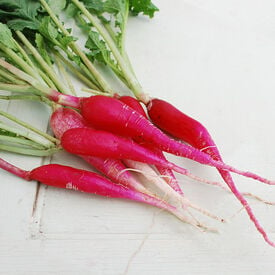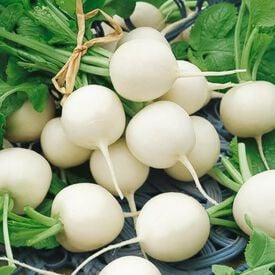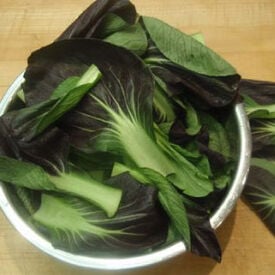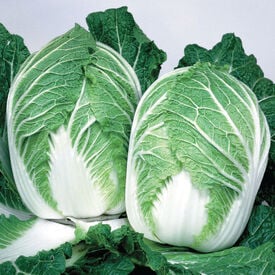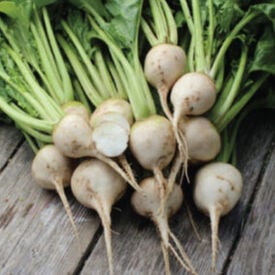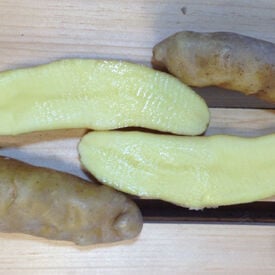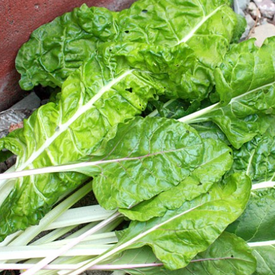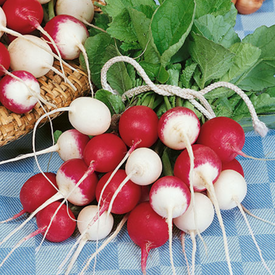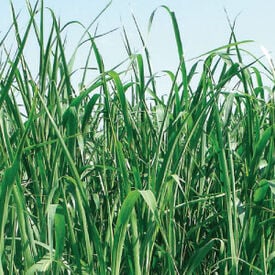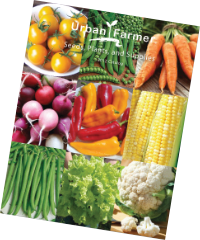Fire Fresh hybrid swiss chard is excellent for baby leaf or spring mix production. Produces bright red petioles and medium-dark green leaves. Has an above normal growth rate and produces long oval leaves that have a slight texture.
The Secada Forage Pea is a relatively new forage pea that has a wide range of uses such as forage, green manure, weed suppression and more! This forage pea is highly palatable, self-climbing and with high dry matter yields. A fast growing, cool-season annual legume, the Secada Forage Pea performs very well during the fall, winter and spring in Southern states. In more northern climes, an early spring plant will give high dry matter yields of excellent forage. Uses: Chicken Forage, Deer Attractant, Forage, Green Manure, Nitrogen Fixation, No Till, Organic Matter (Biomass), Weed Suppression
The Golden Sweet Pea is really the gold standard for yellow shelling peas! This yellow pod snow pea grows to be around 3 inches long. This pea has a wonderful sweet taste and can be eaten raw in salads or steamed as a side dish. The large 5-6 foot vines need to be trellised and will grow beautiful purple flowers. Certified Organic. Learn more about our organic seeds.
The Large White Ribbed Swiss Chard has a wide and flattened white stem. This variety is a popular heirloom chard that has tender and thick smooth leaves. The Large White Ribbed is very tasty and can even substitute asparagus when creamed.
The Canada Wildrye is a cool-season bunchgrass grain variety that can be found throughout Canada and the U.S. except in the southeastern states. It is typically found in prairies, open woods, fields and disturbed sites. This grain tends to be short-lived but provides quick stabilization for erosion control seedings, and it makes a good, early successional component of prairie mixtures. The Canada Wildrye provides quality forage for livestock and wildlife.
The Curled Cress is a highly nutritious aquatic green. This cress has been cultivated for hundreds of years. This peppery and pungent cress has the same tangy flavor as watercress, as they are of the same botanical family. Curled cress is great for seed sprouting or microgreen growing!
The Red Velvet Lettuce produces very dark maroon to greenish-bronze tinged colored leaves that have a nice chewy texture. This beautifully unique variety is a great choice for mixed salad greens. This lettuce is slow to bolt and will become bitter in the heat.
Ruby Fresh hybrid swiss chard is perfect for market growers. Perfect for producing baby leaf greens that have bright red petioles with a well-defined venation. It has thick round to oval leaves. Ruby Fresh is a great choice for baby leaf or spring mix growers.
The Cincinnati Market Radish is a uniquely skinny and elongated pink to red radish that is a fresh-from-the-garden-favorite! This six inch variety has a delicately mild taste with a very tender and crisp texture, making it perfect for fresh eating. The early maturing radish has been an heirloom garden favorite since 1885. You can enjoy the delicious Cincinnati Market from spring to fall.
The Hailstone Radish is a round white radish with a very crisp flesh that is a nice color contrast on relish trays and in salads. This quick growing radish is suitable to both spring and fall planting. Begin harvesting this radish variety when its nearly an inch across.
Red Choi is a beautiful Pak Choi cabbage that has an excellent flavor cooked into meals! This variety is green with maroon veins that changes into a deep red color. The Red Choi has a compact growing habit.
China Express is a chinese cabbage that is a widely-adapted and can be grown throughout. This is a very uniform cabbage with tightly wrapped heads. Medium-sized that are fast maturing.
The White Albino beet plants produce good yields of very sweet white beets. The beets are white and will never stain again! This gourmet beet is ideal for boiling, pickling, baking, and freezing.
SPRING SHIPPING - Certified - The Banana Fingerling is a beautiful light brown skinned potato with a creamy inside! This variety is the most popular fingerling and it's also the easiest to grow. Developed in Europe, the Banana Fingerling is proclaimed to be excellent in salads. It is used amongst chefs and gourmet markets. The yellow, banana-shaped, waxy tubers have a firm texture that has wonderful flavor when baked, boil or steamed Mid-season!
The Lucullus Swiss Chard produces highly nutritious leaves from early spring until the first hard freeze in the fall. This variety produces great during the summer heat. This chard is a very popular variety grown throughout the United States.
The Confetti Mix is a fast maturing, colorful bled of the classic red, white, and bi colored radishes, all with a remarkable flavor! This fun mix is a beautiful addition to any assortment. These classic bright colors are perfect for any market grower or home gardener.
Spring Raab broccoli, also known as rapini, has roots in Mediterranean cuisine, particularly in Italy, where it has been cultivated for centuries. This unique vegetable is characterized by its slender, green stalks topped with small yellow flowers and dark green leaves, which are edible and packed with nutrients. The flavor of Spring Raab is distinctively bitter and nutty, which softens with cooking, making it a versatile addition to dishes like stir-fries and pasta. Harvesting typically occurs 40-60 days after planting, ideally before the flowers fully open for optimal taste. This cool-season crop thrives in well-drained soil and prefers cooler temperatures, making it perfect for early spring or fall planting. Its rapid growth and ability to produce multiple harvests make Spring Raab a favorite among gardeners, while its rich vitamin content adds to its appeal for health-conscious cooks.
The Piper Sudangrass is a great catch crop for excess nitrogen that produces heavy amounts of organic matter and suppresses weeds. This grass grows quickly at heights up to 7 feet. The Piper Sudangrass is great for livestock forage, but should be grazed only when mature and never after a frost as it turns toxic. Uses: Erosion Control, Green Manure, Nitrogen Scavenger, No Till, Organic Matter (Biomass), Weed Suppression
